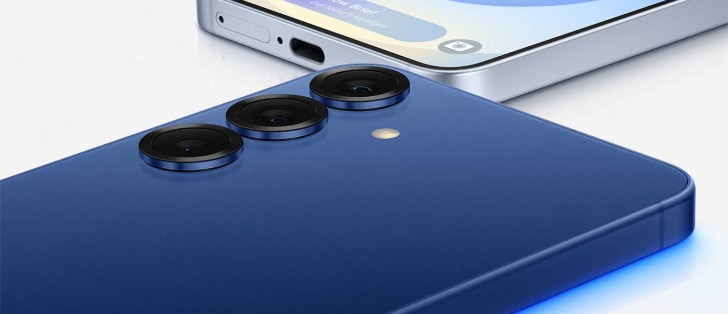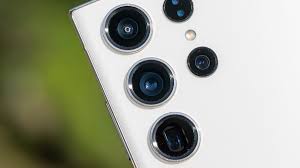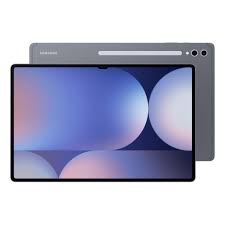What’s Samsung’s Quantum HDR And Why It Matters
When you purchase through links on our site, we may earn an affiliate commission which helps in keeping this website running. Here’s how it works.
Use the Code ref-09ngex to get 5% off from Samsung
In our world of modern televisions, picture quality has gone far beyond just resolution. Today, High Dynamic Range, better known as HDR, has become just as important as 4K or even 8K resolution. It’s what gives the scenes we watch, their realistic contrast, vibrant colors, and stunning brightness. Among the many types of HDR technologies, Samsung’s Quantum HDR stands out as a major selling point in their premium TVs.
But what exactly is Quantum HDR, why should we care about it, and how does it differ from regular HDR? Is it just a flashy name for something every TV already has, or does it truly make a difference in what you see on screen? In this article, we’ll break down everything you need to know about Quantum HDR, including how it works, what it improves, and why it matters for your viewing experience.
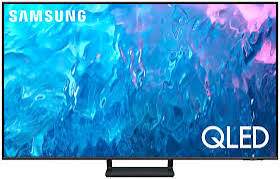
Difference Between HDR and Quantum HDR
Before we get to know what Quantum HDR is, we need to know what the HDR itself is.
High Dynamic Range or HDR as we call it, is a display technology that enhances the contrast and color of your screen far beyond what older Standard Dynamic Range (SDR) TVs can do. With HDR, you get brighter highlights, darker shadows, and richer, more realistic colors, making everything from movies to video games look more lifelike and immersive. Whether it’s sunlight reflecting off a car or the glow of a candle in a dark room, HDR adds depth and detail that SDR simply can’t match.
Now, Samsung has taken this a step further with its own version called the Quantum HDR. This isn’t just your regular HDR with a different name, it’s a more advanced version which is designed specifically for Samsung’s QLED and Neo QLED TVs. Quantum HDR combines HDR10+ support with Quantum Dot technology to produce more accurate colors and higher brightness levels. The result is a display that doesn’t just show HDR content, it brings it to life with eye popping clarity and realism.
Samsung uses different labels like Quantum HDR 4X, 8X, 12X, and 24X to describe the performance level of the HDR on each model. In simple terms, the higher the number, the more powerful the contrast and brightness enhancements, especially in high-end TVs.
How Quantum HDR Works
Quantum HDR works by combining several advanced display technologies to deliver a brighter, more colorful, and more detailed image, especially in scenes where it has both dark shadows and bright highlights.
At the heart of Quantum HDR is Quantum Dot technology. These are microscopic particles that emit incredibly pure and vibrant colors when hit by light. Samsung uses them in its QLED and Neo QLED TVs to dramatically improve color accuracy and brightness compared to regular LED TVs.
Another key part we should know about the Quantum HDR is the local dimming. This feature divides the TV screen into zones that can brighten or dim independently, making dark areas look truly black without affecting the brightness of lighter areas. Combined with high peak brightness levels, this helps Quantum HDR show details in both the darkest and brightest parts of an image, that’s something the standard HDR often struggles with.
Samsung also adds support for HDR10+, a dynamic HDR format that adjusts brightness and contrast scene by scene or even frame by frame. This ensures you’re always seeing the most accurate and impactful version of what the director intended.
When you see terms like Quantum HDR 8X or Quantum HDR 12X, they refer to the level of performance in contrast, brightness, and color range. Higher numbers generally mean the TV can hit brighter highlights, deeper blacks, and a wider range of colors, especially in premium models.
Quantum HDR vs. Standard HDR: Which Is Better.
At first glance, all HDR might seem the same, but there’s a noticeable difference between standard HDR and Samsung’s Quantum HDR, especially when it comes to the picture quality.
Standard HDR, like HDR10, improves image quality by expanding the range between the darkest blacks and the brightest whites. It also brings out more realistic colors and details, making your content look better than traditional SDR. However, it often uses static metadata, which means the HDR settings remain the same throughout the entire video, regardless of what’s happening in each scene.
On the other hand, Quantum HDR, especially when paired with HDR10+, uses dynamic metadata. This then allows the TV to adjust brightness, contrast, and color settings in real time, frame by frame or scene by scene. The result is a more precise and impactful viewing experience with enhanced detail, especially in high-contrast scenes like explosions, sunsets, or night shots.
Additionally, Quantum HDR takes full advantage of Samsung’s advanced panel technology, things like higher peak brightness levels and local dimming zones. This allows it to deliver better contrast and a more immersive image compared to TVs with basic HDR capabilities.
So in simple terms:
Standard HDR = Good picture.
Quantum HDR = Great picture with deeper blacks, brighter highlights, and more vibrant colors—especially on Samsung’s higher-end TVs.
Why Does This Matters for Viewers
So, why should you care about Quantum HDR when buying a Samsung TV? Well, because it directly impacts how real, vibrant, and immersive your content looks, whether you’re watching a blockbuster movie, streaming your favorite show, or playing games on a next gen console.
With Quantum HDR, bright scenes look more dazzling, and dark scenes reveal more detail, instead of becoming a flat, shadowy mess. Fireworks burst with intensity, stars shine in deep night skies, and skin tones appear more lifelike—even in challenging lighting.
For movie lovers, Quantum HDR creates a cinema like experience at your home. It brings out subtle details in high-quality content, especially from services like Netflix, Disney+, Prime Video, and Apple TV, all of which support HDR formats.
For gamers, Quantum HDR makes a big difference too. On consoles like the PlayStation 5 and Xbox Series X, you’ll notice enhanced contrast and color accuracy, making gameplay look sharper and more responsive. Many Samsung TVs with Quantum HDR also include low input lag and high refresh rates, further improving the gaming experience.
Simply put, Quantum HDR makes everything look better, not just brighter, but more realistic, dynamic, and emotionally engaging. Once you experience it, it’s hard to go back.
Supported Samsung Devices
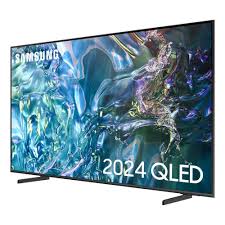
So, now we know what’s Samsung Quantum HDR is about, we need to know what device support it.
Luckily, Samsung has integrated Quantum HDR across a wide range of its premium TVs, especially in its QLED and Neo QLED lineups. However, not all Quantum HDR is created equal, different models come with different levels of performance.
Here’s a breakdown of where you’ll find Quantum HDR:
QLED TVs (like the Q60C, Q70C, and Q80C): These models typically feature Quantum HDR or Quantum HDR 4X/8X, offering good contrast and color enhancement with solid brightness.
Neo QLED TVs (like the QN85C, QN90C, and QN95C): These come with Mini LED backlighting and higher Quantum HDR levels (such as Quantum HDR 12X, 24X, or even 32X) delivering exceptional brightness, deeper blacks, and finer control over lighting zones.
8K QLED TVs (like the QN800C and QN900C): These flagship models include the most advanced version of Quantum HDR, often branded as Quantum HDR 64X, offering ultra high brightness and extreme detail for top-tier content.
Quantum HDR also supports popular HDR formats like:
HDR10
HDR10+ (Samsung’s preferred format)
HLG (Hybrid Log-Gamma, it’s used for live broadcasts)
While Dolby Vision is not supported on Samsung TVs, Samsung has heavily optimized HDR10+ to deliver a similar level of dynamic performance.
If you’re shopping for a Samsung TV and see “Quantum HDR” in the specs, check the exact version (4X, 8X, 12X, etc.) it gives you a good idea of how powerful the HDR performance will be on that model.
Limitations And Considerations Of Quantum HDR
So, are there things to still consider about their, unfortunately yes. While Samsung’s Quantum HDR brings clear visual improvements, it’s important to understand that it’s not without limitations and that not all “Quantum HDR” experiences are equal.
It’s a Samsung Marketing Term
“Quantum HDR” isn’t a universal industry standard like HDR10 or Dolby Vision. It’s a proprietary branding used by Samsung to describe how its TVs handle HDR content. This means two TVs with “Quantum HDR” could perform very differently depending on their specs, such as brightness levels and panel quality.
Quantum HDR Varies by Model
The numbers (like Quantum HDR 4X, 8X, 12X) are not official performance metrics. They’re marketing terms to represent the relative HDR capability within Samsung’s lineup. A TV with Quantum HDR 4X will not deliver the same performance as one with 24X. Higher-end models get better peak brightness, more local dimming zones, and finer color detail.
No Dolby Vision Support
You should note that Samsung TVs do not support Dolby Vision, one of the most widely used dynamic HDR formats on streaming platforms. Instead, Samsung focuses on HDR10 and HDR10+, which still deliver excellent performance but may limit compatibility with some content mastered in Dolby Vision.
Real World Performance Depends on Content
Quantum HDR shines with true HDR content like 4K HDR movies, games, or shows from Netflix or Disney+. But if you’re watching regular HD broadcasts or SDR content, the difference may be less noticeable unless the TV uses strong upscaling and tone mapping.
In short, while Quantum HDR definitely improves the viewing experience, your results will depend on 3 things:
- The TV model you choose
- The quality of the content you’re watching
- Your viewing environment (e.g., bright vs. dark room)
FAQ
Is Quantum HDR Just Marketing or a Real Step Up?
That’s a good question, is Quantum HDR just another fancy marketing term made by Samsung to sell more TVs, or does it actually make a difference in how you experience content?
The answer is: Both.
Yes, “Quantum HDR” is a Samsung specific term, and like many branded features, it can sound more impressive than it is especially on lower end models. However, when you look beyond the branding, the technology behind Quantum HDR is real and delivers noticeable benefits, especially in mid-range to high-end Samsung TVs.
Quantum HDR combines advanced panel technology (like QLED and Mini LED), higher peak brightness, better contrast, and dynamic HDR support (HDR10+) to create images that are more vibrant, detailed, and immersive than what you’d see on a basic HDR TV. It enhances every scene dynamically, showing subtle details in shadows, brilliant highlights, and lifelike colors.
So, while the name might be marketing, the visual improvements are very real, especially if you’re upgrading from an older TV or a basic LED model.
Conclusion
Samsung’s Quantum HDR isn’t just a buzzword, it’s a combination of real technologies that enhance how you see movies, shows, and games. By building on HDR standards like HDR10+ and combining them with QLED and Mini LED innovations, Quantum HDR delivers brighter highlights, deeper shadows, and richer colors that truly elevate your viewing experience.
Whether you’re watching an action-packed movie, streaming a 4K HDR series, or playing a next-gen game, Quantum HDR helps bring that content to life with more impact and realism. While it’s true that the “Quantum HDR” label can vary in performance depending on the TV model, the improvement over standard HDR, especially in mid to high-end Samsung TVs, is clear and worth considering.
So, next time when you or your close ones are shopping for a Samsung TV and want one that delivers cinematic visuals, stunning contrast, and dynamic color, a model with Quantum HDR is absolutely a great choice.
When you purchase through links on our site, we may earn an affiliate commission which helps in keeping this website running. Here’s how it works.
Use the Code ref-09ngex to get 5% off from Samsung




